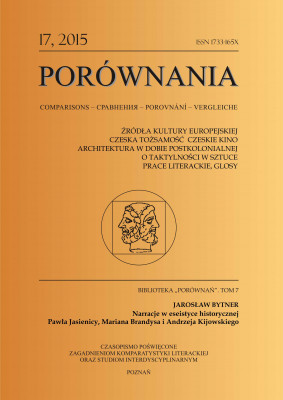The Past or the Future – Dilemmas with Monuments in the Times of Postcolonialism
The article presents a comparison of the attitude towards cultural heritage and monuments in Poland under communism (1944-89) and after 1989. Three different ways of handling destroyed monuments prevailed. Firstly, there was professional conservation, which preserved the status quo or reconstructions and rebuilding, which were carried out even tens of years after the destruction of the building. Also, there were historical stylisations the result of which were buildings built based on casual imitations of former architecture. The third tendency was to erect new buildings of modern form in place of the old dilapidated ones or near them. The article includes a detailed analysis of the attitude towards the past on the basis of monuments in Poland under communism and after 1989 which can be observed in the reconstructions, rebuilding and historical stylisations. It has been assumed that in the years after 1989 the tendency of the former era was continued. All phenomena from the times of communism were maintained including numerous reconstructions and rebuildings. Many of them were casual historical stylisations whereas the rebuilt buildings were “more beautiful than ever”. In the times of communism it was accompanied by a theoretical reflection with new arguments and observations, whereas the last years did not witness new theses or arguments. The situation was defined as “long-time continuance” of the developed methods and ways of acting in the area of monument maintenance which are still used in the new social reality and different political system. A new phenomenon which has surfaced in the recent years is the full acceptance of multinational heritage and a number of actions towards its maintenance and conservation. The times after the fall of communism also brought new challenges, the most important of which was the change of the users of many buildings which lead to its abandoning and a necessity to find a new function for them. A great number of old factories, mills, warehouses, industrial and railway buildings were ruined and pulled down. Only some historical buildings were adapted to new functions. Globalisation and adapting to the market were other great challenges which also influenced the monuments. It was a wholly new phenomenon which has become the most important factor shaping the attitude towards monuments at present.
| Article Title | Type | Size |
|---|---|---|
| 08 Lewicki | [pdf] | [770 KB] |
